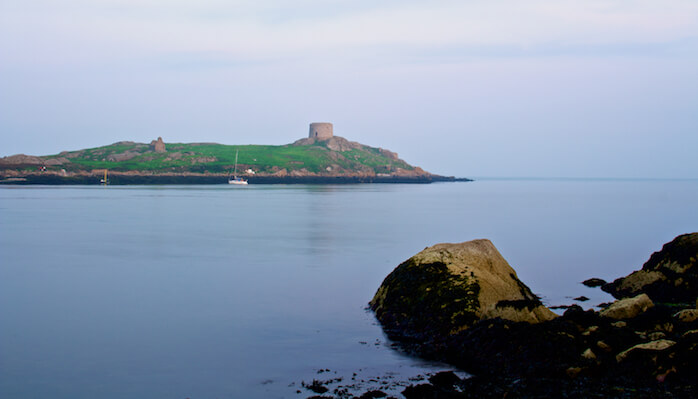 What can leaders learn from Ireland’s advancement in the global economy? Start with how they got there.
What can leaders learn from Ireland’s advancement in the global economy? Start with how they got there.
The 2016 KOF Index of Globalization ranked Ireland as the #2 most globalized country in the world, barely edged out of the #1 position by the Netherlands. On a recent trip to the country, where I attended a conference, toured multi-national business Glanbia Performance Nutrition, and a dropped in on a few of the local retail establishments (a.k.a. “pubs”), I found first-hand evidence of just how globalized Ireland has become.
Based on observations, conversations, and a little research, here are five important factors that contribute to Ireland’s globalization ranking:
The lucky latitudes, and the lucky longitudes. One of Ireland’s key globalization strengths is something it shares with many other countries, namely its geographic position in a favorable climate zone. The temperatures tend to stay between 32F and 75F (0C to 25C) with an average around 50F (10C). Of course, it does rain quite a bit, but snow is rare.
Ireland didn’t just get lucky with latitude, it’s also in the lucky longitude club. As Hugh McGuire, CEO of Glanbia Performance Nutrition, pointed out, Ireland’s central location between North America and Asia allows associates to coordinate with Asia in the morning, Europe throughout the business day, and North America in the afternoon. Very handy when you’re managing a global enterprise!
The Irish diaspora and multi-culturalism. During a panel discussion at the Irish Academy of Management Conference, one participant observed that, at the recent summer Olympics in Rio, if every Olympic athlete with an Irish heritage had actually been Irish citizens, Ireland would have been in the top five medal winners at the game.
While this observation drew some good-natured laughs from the audience, it also spoke to a deeper sense of Ireland’s loss in what is known as the Irish diaspora. Today, the population of Ireland (including the Republic of Ireland and Northern Ireland) is about 6 million people, which is only 3/4 of its peak population of 8.5 million in 1840; over 10 million people are thought to have emigrated from Ireland in the last 200 years. While this population outflow has been disastrous to national vitality, it has also created a situation where approximately 70 million people of Irish descent now live in other countries.
From a globalization perspective, this means that Irish citizens are very likely to have visited, or even worked, in a foreign country. On an informal basis, the vast majority of retail workers we interacted with had spent extensive time living and working in places like the United States, Canada, and the United Kingdom. Ireland’s reputation abroad made it a vacation destination for over 8 million people in 2015 and the tourism industry generates over 7 billion euros per year. According to the 2015 World Economic Forum, Ireland was #19 in the world on the ‘Travel and Tourism Competitiveness Index’ and, overall, Ireland continues to be an attractive location for foreign direct investment (FDI).
Language. While the original language of Ireland was Gaelic, the primary spoken language today is English. This means that Ireland’s population is fluent in one of the world’s most spoken languages, which can be a major incentive for travelers and businesses alike. Setting up a new global business, or transitioning to one, is difficult enough without having to deal with language and cultural barriers. Except for Ireland’s refusal to drive on the correct side of the road, there are few cultural or language barriers to U.S. companies trying to do business there. Since Gaelic is the official language of the Republic of Ireland, you will, however, see Gaelic script on every official sign or pronouncement. So, dul I dtaithi air! (Translated: get used to it!)

CVDL executive students join leaders of a multinational corporation for a tour of one of Ireland’s growing global companies.
EU membership. The Republic of Ireland is a full member of the European Union (EU) and it is already positioning itself to take advantage of the UK’s recent “Brexit” vote. Membership in the EU makes Ireland an attractive location for gaining access to the 500 million-person EU market. Ireland uses the euro as its official currency, which provides important stability compared to an alternative currency such as the Irish punt. There are several other important benefits associated with using the euro, both for Ireland and new businesses located there. These include such things as reduced transaction costs, increased price transparency, lower interest rates, and lower inflation. Of course, the Apple tax ruling was on everyone’s mind as the EU took aim at Ireland’s business-friendly tax policies; only time will tell if the ruling has a negative effect on Ireland’s desirability as a good FDI opportunity.
Room for growth. Finally, another area in Ireland’s favor is its room for growth. With a population density of only ~67 people/square km, Ireland is one of the least populated countries in Europe. This means Ireland has plenty of room for internal expansion and, with the highest birth rate in the EU, the country seems poised to maintain its young, well-educated, work force. These are facts that U.S. companies are recently realizing, as more have started operations in rural areas instead of defaulting to the Dublin area.
These five factors explain much of why Ireland ranks high in terms of globalization, and why that ranking is leading to growth in business. What they miss, of course, is the beauty and wit of Ireland, which charms tourists and business travelers alike with rolling hills, good natured citizens, and a welcoming, “just one more pint” mentality. With all of Ireland’s advantages, whether your travels take you to Ireland for business or pleasure, there’s a very good chance that you won’t leave disappointed!
__
Brad Davis is a senior analyst with Engility Corporation, who served 20 years with U.S. Air Force. He is also a student in the Ph.D./D.B.A. Program in Values-Driven Leadership.

